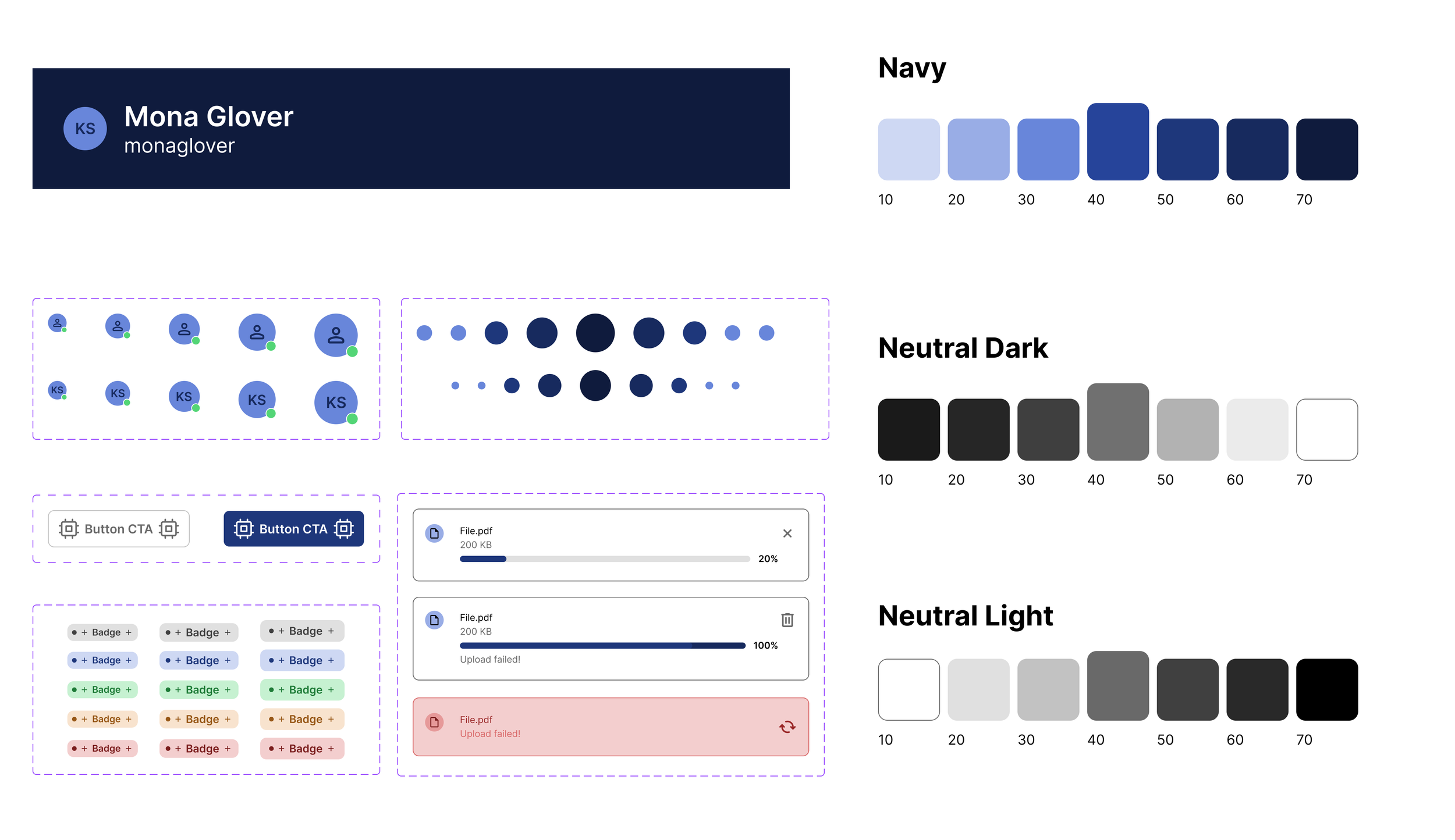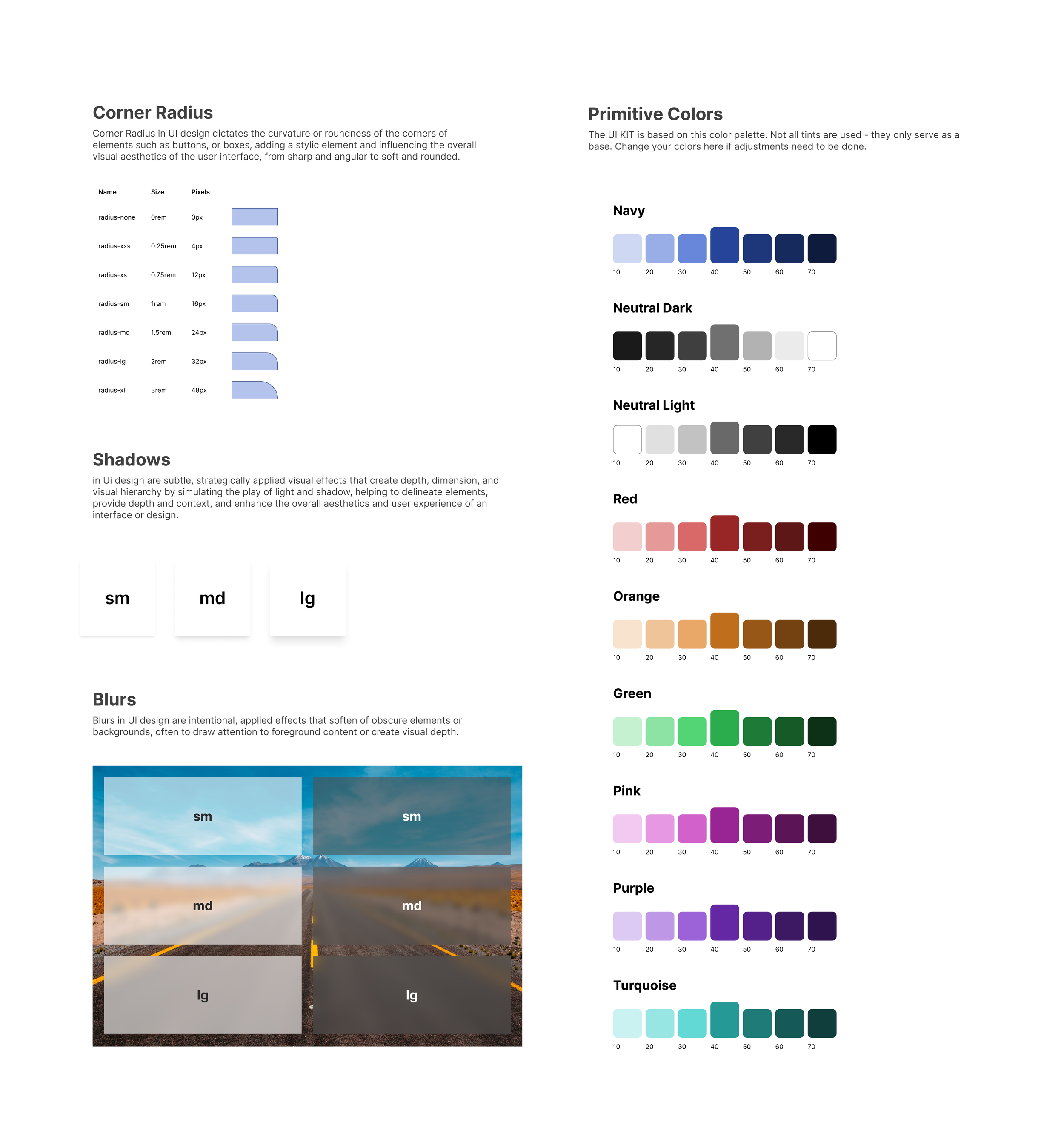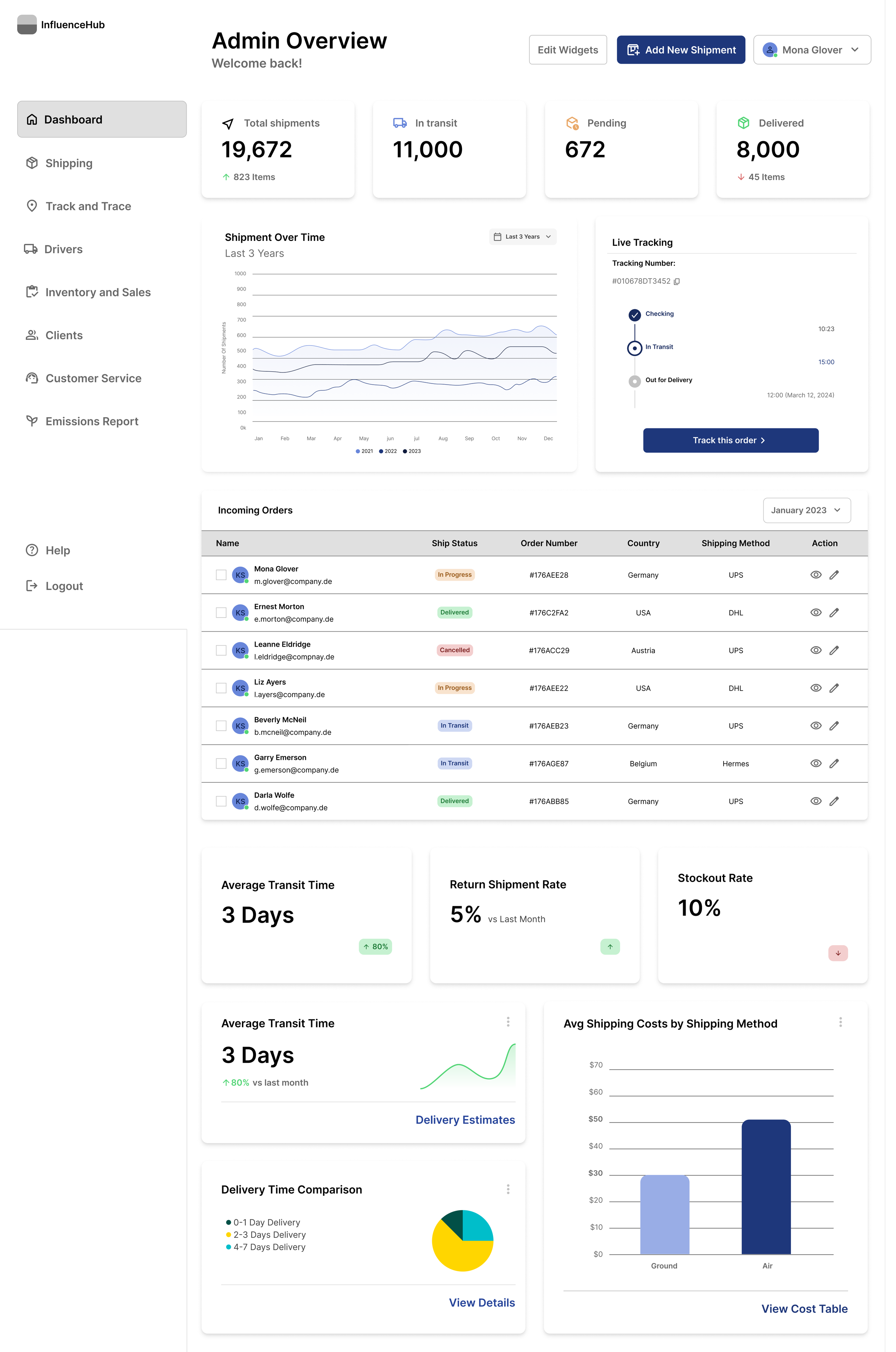Pflichtpraktikum
Company JAX IT GmbH
Year 2023-2024 (5 months)
Role UX/UI Designer
Insight into the Challenge
During my Pflichtpraktikum at JAX IT, I served as a UX/UI Designer and was responsible for a key project: creating a comprehensive design system for various departments within the company. This design system needed to be adaptable across both desktop and mobile platforms, ensuring a seamless user experience regardless of the device.
A prominent example of this work is reflected in the dashboards developed for the Logistics department. The challenge was to design a system that maintained consistency and usability across different interfaces, while also accommodating the specific requirements of each department. My responsibilities included defining the design principles, creating reusable components, and ensuring that the user experience was optimized for both desktop and mobile modes.
This project allowed me to contribute to the improvement of design processes at JAX IT, ultimately enhancing the efficiency, coherence, and adaptability of their user interfaces across multiple devices
Process Behind the Design System
Creating the design system at JAX IT involved a structured approach to ensure consistency, usability, and adaptability across various departments and devices. Here’s an overview of the steps I took:
1. Understanding the Task and Objectives:
I began by thoroughly researching the task and understanding the goals my supervisor wanted to achieve with this project. This involved several discussions to clarify the vision, desired outcomes, and the specific challenges that the design system needed to address.
2. Defining Design Principles:
Based on the objectives, I established core design principles that would guide the creation of the design system. These principles focused on simplicity, consistency, scalability, and responsiveness, ensuring that the system could be easily applied across both desktop and mobile platforms.
3. Creating Atoms, Molecules and Components:
I started by designing the smallest components, or "atoms," such as buttons, icons, and typography. These atoms were then combined into more complex elements, or "molecules," like input fields, cards, and navigation bars. Each component was designed to be reusable and adaptable, ensuring flexibility across different interfaces.
4. Developing Dashboard Templates:
With the atoms and molecules in place, I created standardized dashboard templates for different departments. These templates included page structures and interface patterns that adhered to the design system's guidelines, ensuring consistency across both desktop and mobile modes.
The following examples showcase some of the dashboards I created using the various atoms and molecules from the design system.





